The tourism industry is constantly evolving and sustainability is becoming an increasingly important factor for many travelers. In recent years, accommodation companies like Airbnb and Hosts have been working together to make tourism more sustainable and environmentally friendly. One of the best examples of sustainable tourism is in Australia. Gawthorne’s Cabin is a small house that can be rented through Airbnb.
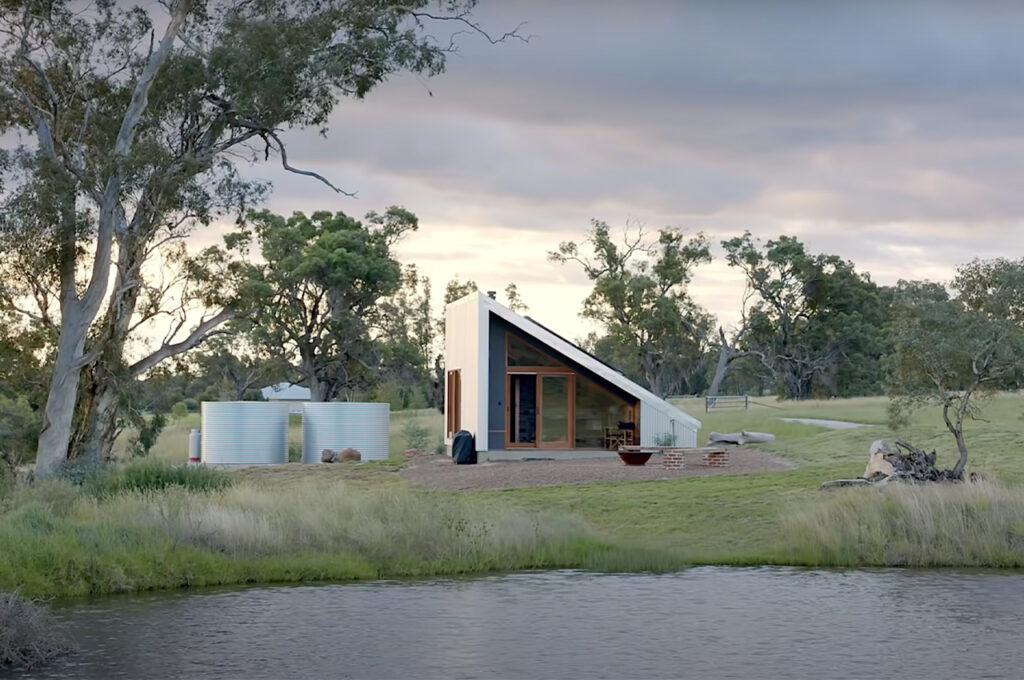 Photo Courtesy of AirbnbThis tiny house was designed by Cameron Anderson
Photo Courtesy of AirbnbThis tiny house was designed by Cameron Anderson
Gawthorne’s Cottage is located on a large agricultural estate in New South Wales and was designed by architect Cameron Anderson to engage with the history and context of the site. Built to provide an alternative source of income for farm workers, the small house was designed in a similar form to other farmland structures such as haystacks and outbuildings.
Build Your Own Tiny Home Photo Courtesy of Airbnb
Photo Courtesy of Airbnb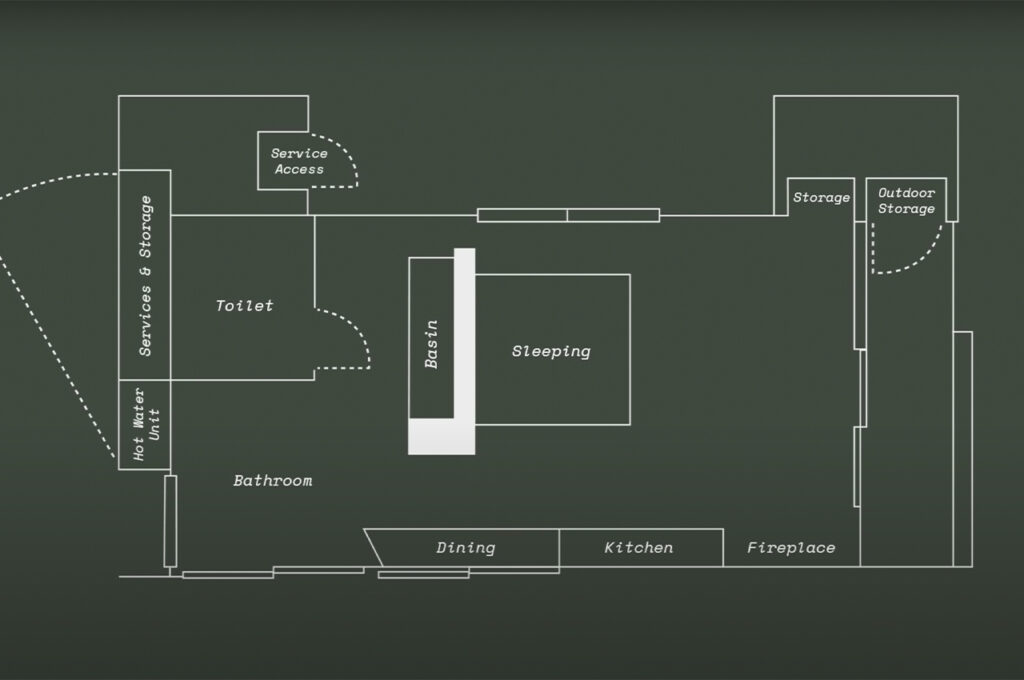 Photo Courtesy of AirbnbDesign for Sustainability: Solar Panels, Rainwater Harvesting, and Passive Solar Shading
Photo Courtesy of AirbnbDesign for Sustainability: Solar Panels, Rainwater Harvesting, and Passive Solar Shading
The 40 square meters (430 square foot) tiny house has an angled roof that houses an array of north-facing solar panels. The roof has a 30-degree angle to ensure the highest solar output, and the solar panels are oriented towards the north side of the farm. Double-glazed wooden windows and doors direct the view to the southern end of the farm, providing natural ventilation on hot days and insulating the small house on cold nights.
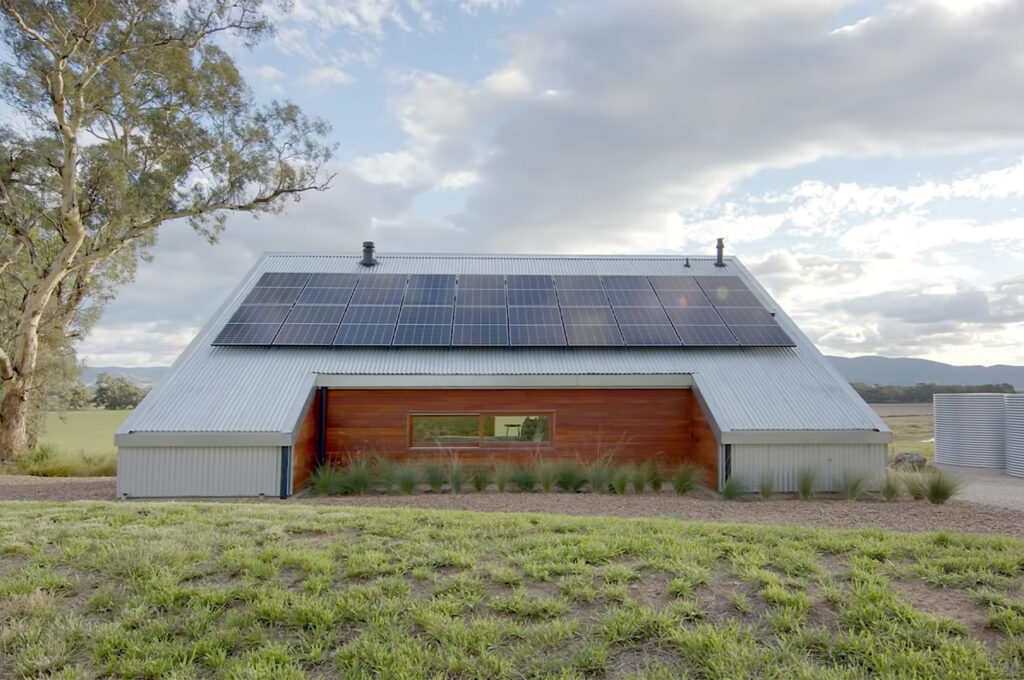 Photo Courtesy of AirbnbMaterials for the construction of the tiny house were sourced from the environment
Photo Courtesy of AirbnbMaterials for the construction of the tiny house were sourced from the environment
Anderson used pre-existing and surrounding materials to create Gawthorne’s Cottage’s array of building materials. In addition to the solar panels, the tiny house is equipped with a 6.6-kilowatt off-grid solar energy system that includes 12 kilowatts of battery storage. The rainwater storage system collects 40,000 liters (10,566 gallons) of rainwater, of which 20,000 liters are reserved for firefighting.
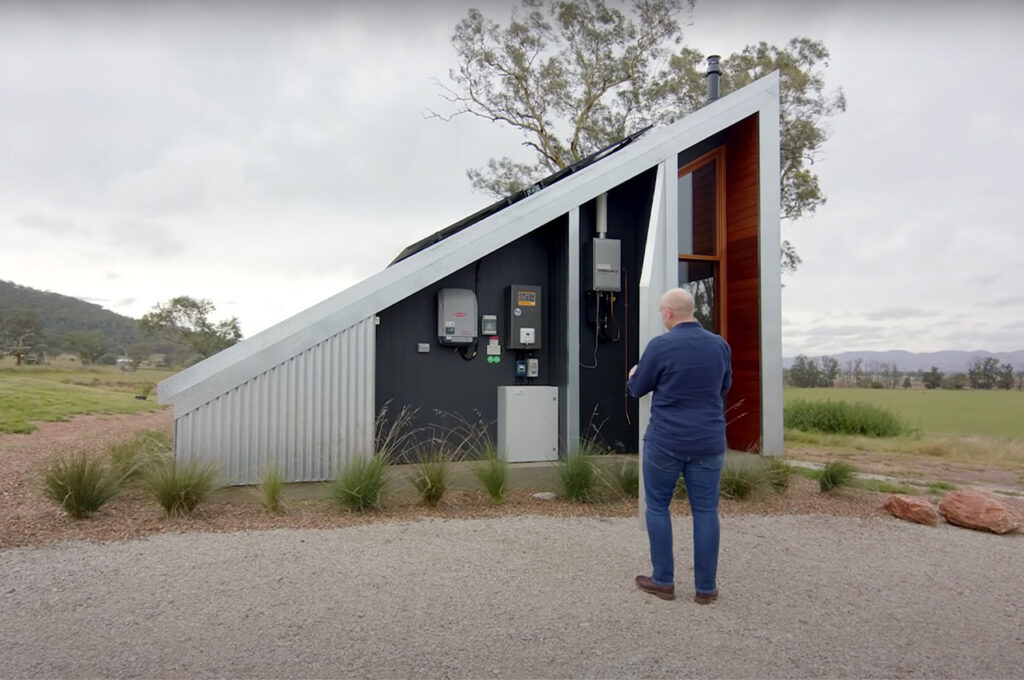 Photo Courtesy of Airbnb
Photo Courtesy of Airbnb
Sustainable energy practices, including the use of solar panels, passive solar shading, and thermal mass from the floor’s polished concrete slabs, work together to position Gawthorne’s Cabin as an eco-friendly tourist destination with Australian views that cannot be found anywhere else.
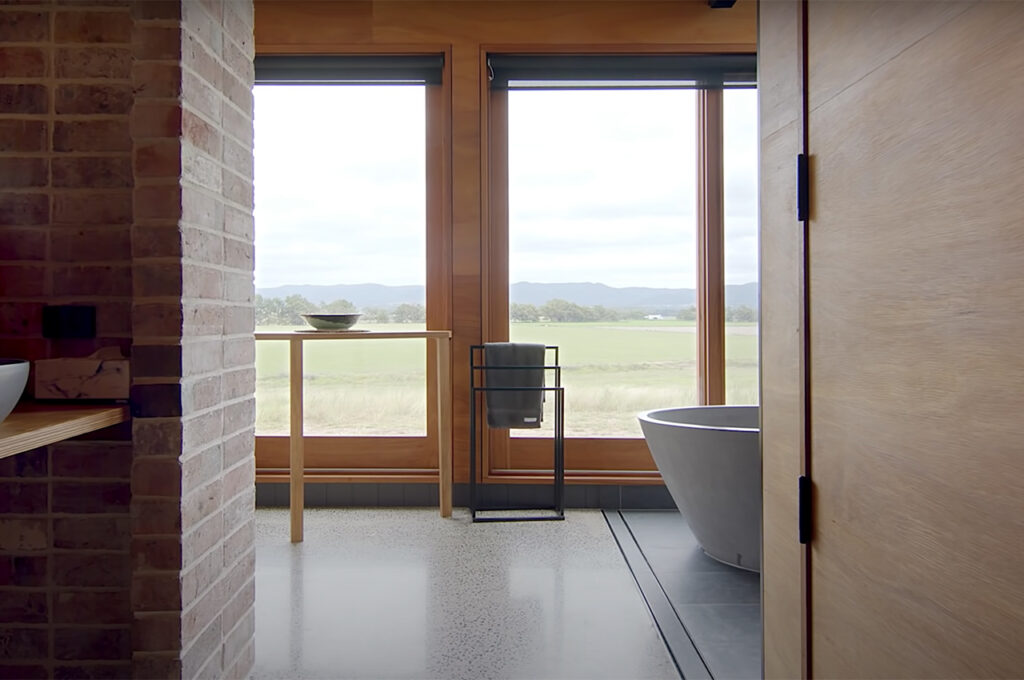 Photo Courtesy of AirbnbCozy Nest Atmosphere: King Bed, Open Floor Plan, and Recycled Brick Headboard
Photo Courtesy of AirbnbCozy Nest Atmosphere: King Bed, Open Floor Plan, and Recycled Brick Headboard
Inside, rich and textured wood paneling spans the walls and ceilings, giving Gawthorne’s Cabin a cozy and warm atmosphere. The micro floor plan of the tiny house feels larger than its size thanks to the open floor plan that extends throughout the house, except the WC (water closet or bathroom).
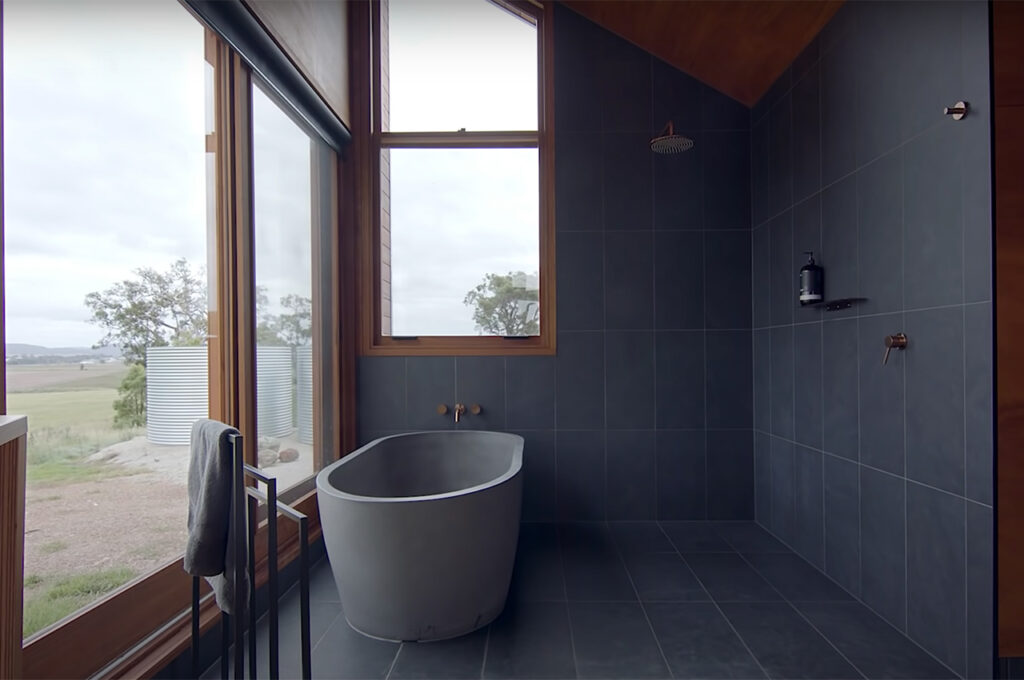 Photo Courtesy of Airbnb
Photo Courtesy of Airbnb
Reused bricks and rich wood paneling cover the walls, ceiling, and furniture, giving the space a rustic yet modern feel.
 Photo Courtesy of Airbnb
Photo Courtesy of Airbnb
The headboard of the king-size bed, for example, is handcrafted from recycled bricks left over from the estate’s previous building. Located next to a small pond, Gawthorne’s Cabin is a unique and charming resort that combines sustainability, comfort, and rustic beauty.
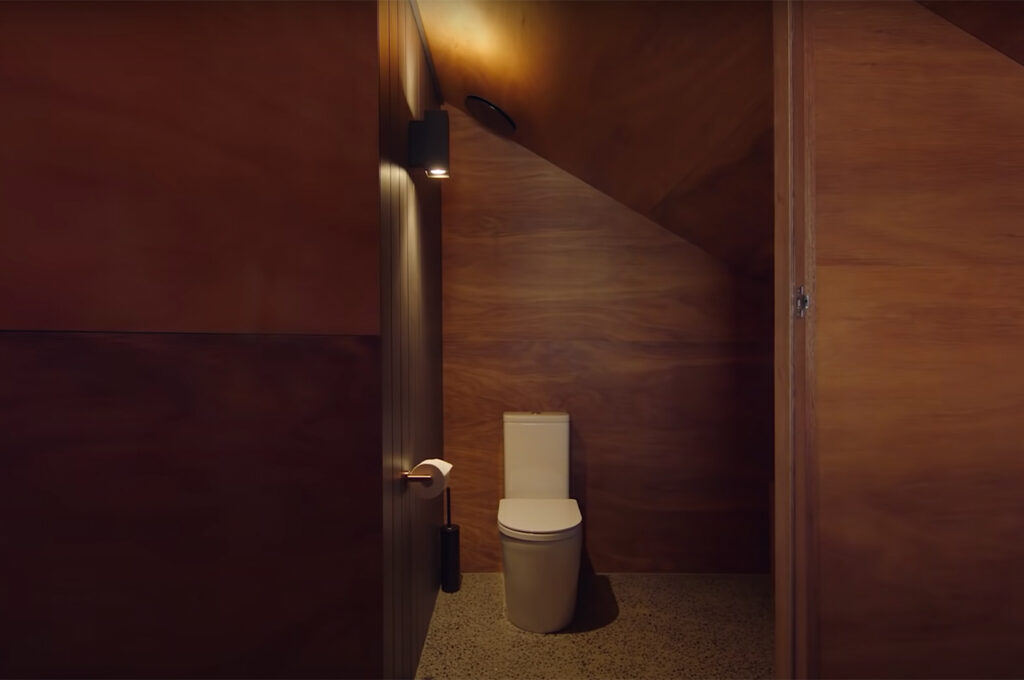 Photo Courtesy of AirbnbConclusion: Gawthorne’s Cabin as an Eco-friendly Tourist Destination in Rural Australia
Photo Courtesy of AirbnbConclusion: Gawthorne’s Cabin as an Eco-friendly Tourist Destination in Rural Australia
Overall, Gawthorne’s Cabin is an excellent example of sustainable tourism and demonstrates how eco-friendly practices can be integrated into hospitality design.
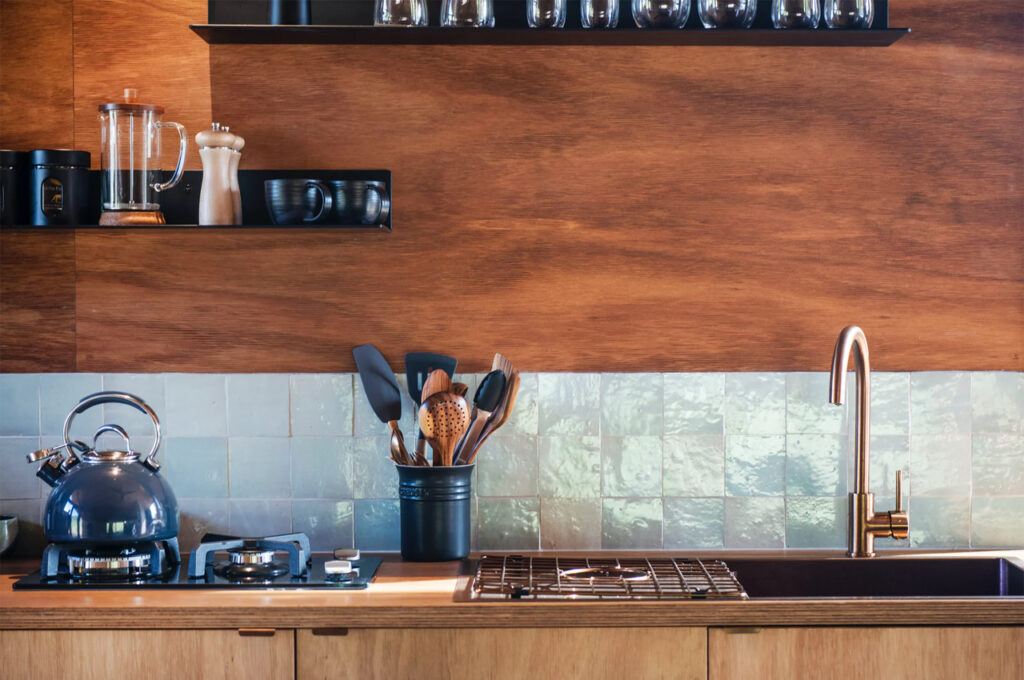 Photo Courtesy of Airbnb
Photo Courtesy of Airbnb
With its solar panels, rainwater harvesting system, and reused materials, Gawthorne’s Cabin is not only an inviting and comfortable vacation spot but also a model for sustainable design in the tourism industry.
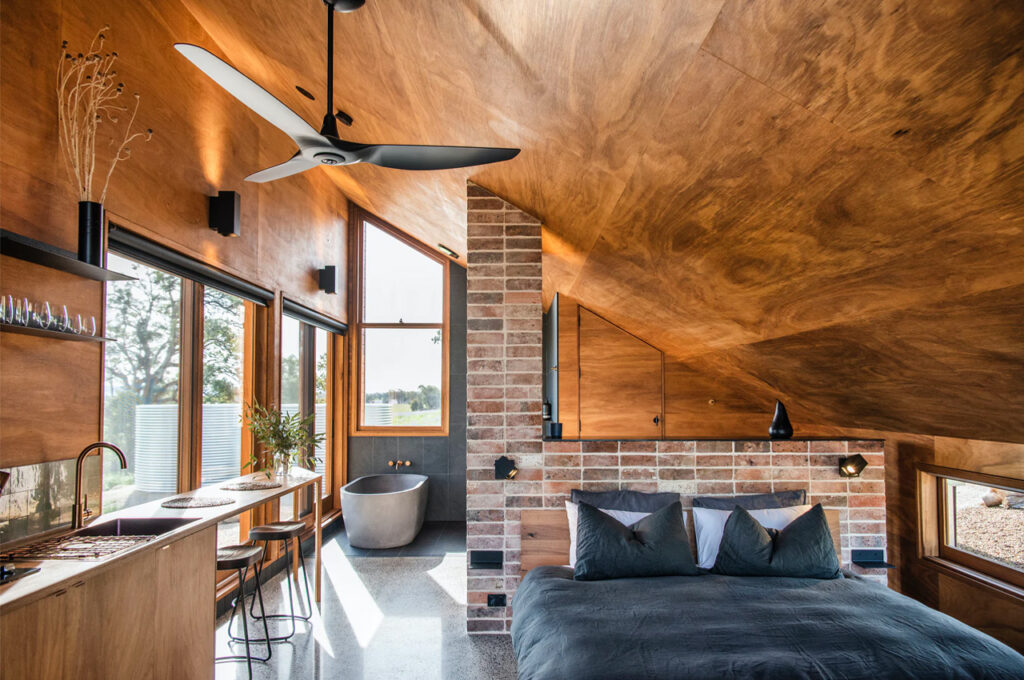 Photo Courtesy of Airbnb
Photo Courtesy of Airbnb
You can see this tiny house closely and get to know it and get inspired. This tiny house, currently for rent on Airbnb, costs $500 per night.





